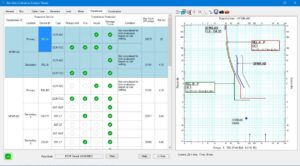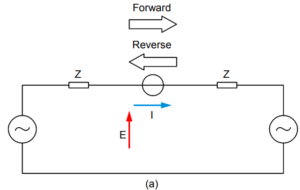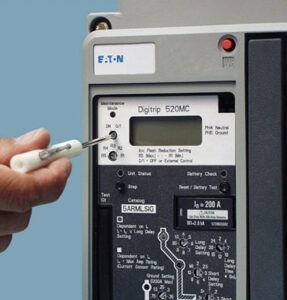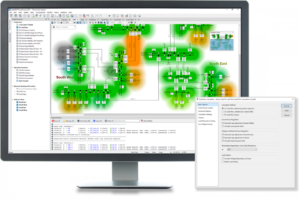Fundamentally, the per-unit method (percentage method) is a calculating procedure. In this procedure, all equivalent system and circuit impedances are converted to a common kVA and kVbase.
This permits the ready combination of circuit elements in a network where different system voltages are present.
Associated with each impedance element and its kVA base, is a line-to-line kV base (usually the nominal line voltage). Nominal voltage along with the resulting base impedance and base current related by the following expressions:
Three Phase Network

Single Phase Network

Note: Each of the above relationships involving kVAbase are sometimes expressed in terms of the corresponding MVAbase, where MVAbase = kVAbase/1000.
This results in the convenient expression of (KV2base/MVAbase) for Zbase for both three-phase and single-phase networks.
Sample Calculation
Below example/figure illustrates the use of the per-unit method:

- Step-1: The first step in a per-unit calculation is the arbitrary selection of the system base kVA
- Step-2: The choice of base kV must be made at one voltage level from which the base value at the other voltage level is dictated by the turns ratios of the transformers.
For circuit in Figure (a), 5000 kVA and 1.0 kV are the base values on the primary of the 10:1 transformer. The resultant base voltage on the secondary of the transformer is 1.0 kV/10 or 0.1 kV.
Next step is to calculate the base impedance (primary and secondary levels) and the per-unit values of the primary and secondary impedances.
Below Figure (b) shows the simplified circuit, once the per-unit impedance and excitation source values are available:

A key advantage of the per-unit method, the transformer turns ratio becomes 1:1. This removes the turns ratio from the calculations as modelled and shown below in Figure (c):

Working with the circuit in Figure (c), the primary current (Ip) and secondary current (Is) are the same. Ohm’s law can easily calculate the primary and secondary current.
The last step is to determine the actual current (Amp) by multiplying each per-unit value by the base current on the primary and secondary levels.
Although the per-unit values calculated for Ip and Is are equal, the base currents are different. Therefore the solutions expressed in amperes are different.
The basis of per-unit method of calculation is on the existence of linearity.







